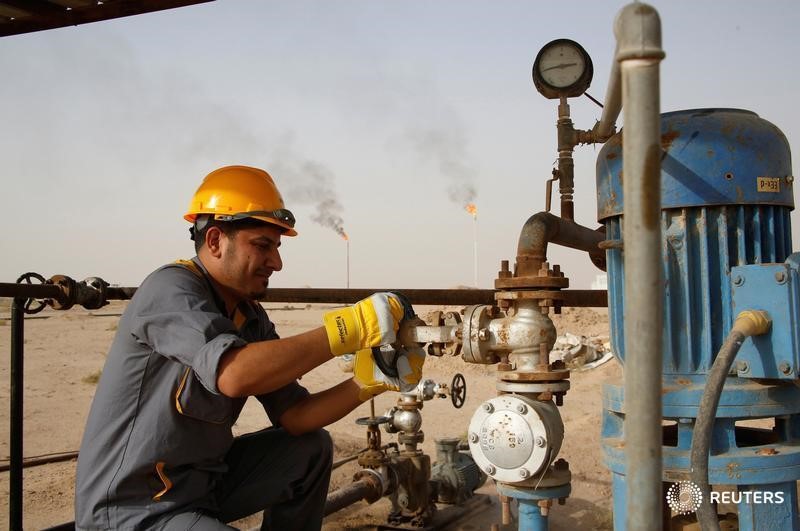Amcor stock falls after Raymond James reiterates Market Perform rating
By Barani Krishnan
Investing.com - Between John Bolton and OPEC, oil bulls just can’t seem to catch the break they want.
Those long WTI and Brent got a slight reprieve Friday as oil prices steadied from their recent pounding. But the benchmark crude contracts were still headed for sharp weekly losses on worries that the fall of former U.S. National Security Advisor Bolton would mean the return of Iranian oil to the market. OPEC’s caution of weak demand for its oil also weighed.
WTI, the U.S. benchmark blend, was up 4 cents, or 0.1%, at $55.13 per barrel by 1:15 PM ET (17:15 GMT).
Brent, the international benchmark blend, rose by 7 cents, or 0.1%, to $60.45 per barrel.
For the week, WTI was down nearly 2.5%, its sharpest slide since the week ended July 14. Brent showed a 1.8% drop on the week, its most in the five weeks since August 4.
Brokerage TD Securities noted that while there was a more positive tone to oil on Friday “on the CTA front, WTI buying … remains on thin ice with $54/bbl serving as key selling levels”.
Phil Flynn, a well-known oil bull and analyst with the Price Futures Group in Chicago, said the best way for the global oil market to handle the potential return of Iranian oil supply was to cut a deal with China.
“Despite all the talk of slowing demand growth, the reality is crude is in tight supply. U.S. oil supply is now 4% below the five-year average and in Europe and globally, supplies are falling as well,” Flynn wrote in his daily report.
“A U.S./China trade deal would put the market in a deficit. China already is responding positively by removing tariffs on soybeans and pork,” he added.
The White House has banned global trade of Iranian oil since November. Prior to the sanctions, Iranian oil exports peaked at about 2.8 million bpd in April 2018. Should the embargo be lifted, an additional 1 million barrels bpd -- much of them in bonded storage in China or floating offshore -- could end up on the global market quickly.
News reports in recent days suggested that Bolton exited after President Donald Trump wanted to relax sanctions on Iran in order to work out a new nuclear deal that would allow the Islamic Republic to export its oil again in return for not developing atomic weapons.
The selloff in oil accelerated on Wednesday after French President Emmanuel Macron reportedly spoke on the phone with his Iranian counterpart Hassan Rouhani to discuss a nuclear deal to take to Trump. Macron has been acting as a go-between with Iran and the U.S.
With Rouhani due to attend the U.N. general assembly in New York beginning Sept. 25, speculation is rife that Trump wants to set up a meeting with him. Rouhani has said he wouldn’t agree to any talks until sanctions were removed and Trump has suggested he’s open to that.
OPEC, meanwhile, is trying to force its members, Iran one of them, to keep to a daily production cut of 1.2 million barrels.
In its monthly report on Wednesday, the cartel forecast that demand for its own crude will average 29.4 million barrels per day in 2020, down 1.2 million bpd from this year. U.S. crude has become the No. 1 export competitor to OPEC oil this year, shipping a steady 3 million bpd or so in recent weeks.
OPEC aside, the Paris-based International Energy Agency also warned of a global oil glut on Thursday, saying risk premiums and supply threats were significantly cut as tensions in the Middle East Gulf have eased and oil industry operations appeared to be normalizing.
